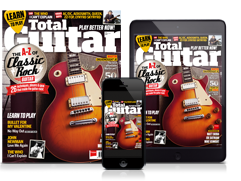Hugo White on making The Maccabees' Marks To Prove It
The guitarist/producer shows us round the band's London studio

Introduction
We meet Maccabees guitarist Hugo White to find out how he produced the band’s latest album, Marks To Prove It, and what we can all learn from his experience…
After roping in some big producers for their first three long players, The Maccabees took things into their own hands for 2015’s No 1 album, Marks to Prove It.
Once you get into the production side of it, it’s so addictive
Guitarist Hugo White jumped into the chair for the very first time and steered the sessions at the band’s own studio in Elephant and Castle, the oft-derided Central London hub to which the album extensively pays tribute.
We eagerly accepted an invitation to drop by the studio to meet Hugo, who’s already started producing other artists in the space, such is his newfound love for the end-to-end process.
“As soon as we finished making the record, everyone was like, ‘Thank God we don’t have to go to the studio again for a while!’, but I was thinking, ‘I think I might go to the studio tomorrow!’, laughs White, who brought in mate Jag Jago to engineer. “Once you get into the production side of it, it’s so addictive. The whole thing just really appeals to me.”
Don't Miss
The Maccabees' Hugo White: the 10 records that changed my life

Going it alone
What was the catalyst for deciding to produce the album yourself?
“For Given To The Wild [2012], we’d just got this place and we were writing in here, but there was none of this gear and it was just really set up like a rehearsal room. I’d already started to do all the band’s demos and look after that side of things, but there was a fear involved with the actual album. I was a bit, ‘It might be one step too far.’
This approach also meant we could charge the record label for studio time from the budget so we could buy some gear
“So we did the record with some other producers and recorded in Wales at Rockfield, which are great studios, but we were really unhappy with what we finished up with and we actually took the project back. I guess it was a misinterpretation from the producers in terms of what our vision of the record was. We felt that vision had been lost.
“We got the hard drive back but the budget was spent so I went, ‘Okay, I’ve got a friend, Jag Jago, who’s a Pro Tools engineer.’ So we literally went round to his house with the hard drive, sat at the computer and that turned into a month of 14-hour days.
“We just jumped into it and ended up back in here re-recording lots of stuff. It was like producing backwards. Once we’d finished, the plan for the next one became, ‘Well, I’m going to do this… and we’ll do it here.’ This approach also meant we could charge the record label for studio time from the budget so we could buy some gear.”
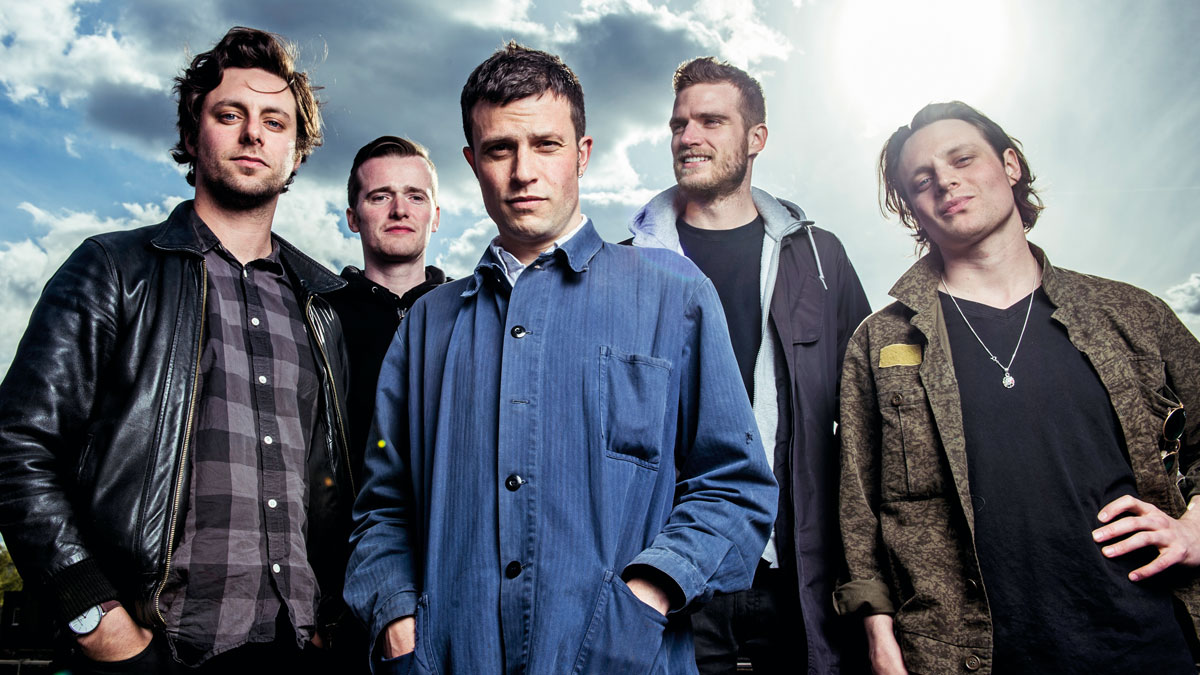
Fresh ears
Was it difficult balancing the producer’s role with being a member of the band?
“We did the writing of the record solely in this studio, just as a band, and we definitely reached a peak of probably a year and a half into it where we needed someone to sit in the room while we were writing.
“We met Laurie Latham, who’s credited on the album, through our manager and he’s just a really calm, kind of old school producer. There is a conflicting thing of being a producer inside the band when you’re a democracy.
My role was to translate the vision that we have as a group
“During the writing process, me saying, ‘This is finished,’ ‘This is great!’ or ‘I don’t like this!’ is the same as another person in the band saying it. When a third party says, ‘Oh I like this!’, then everyone goes, ‘Oh, if he likes it, it must be good!’
“My role was to translate the vision that we have as a group. I understand everyone and I needed to take what everyone sees and turn it into the final record. I think we spent a week or so with Laurie in here and it made a really big difference to us deciding that we were ready to record.”
Do you think it’s important to get that third-party opinion when you’re recording, even if you’re doing the production yourself?
“The reason people go to producers is because you need an outside opinion and you need fresh ears. I think that decision to have Laurie in was about not being stubborn and knowing we needed to get the best out of this and we needed someone to come in and listen.
“You can go crazy. No one had heard anything that we were working on in here except for us and after a while that really builds up until you just don’t know if what you’re doing is terrible or good. Those fresh ears can be really important.”
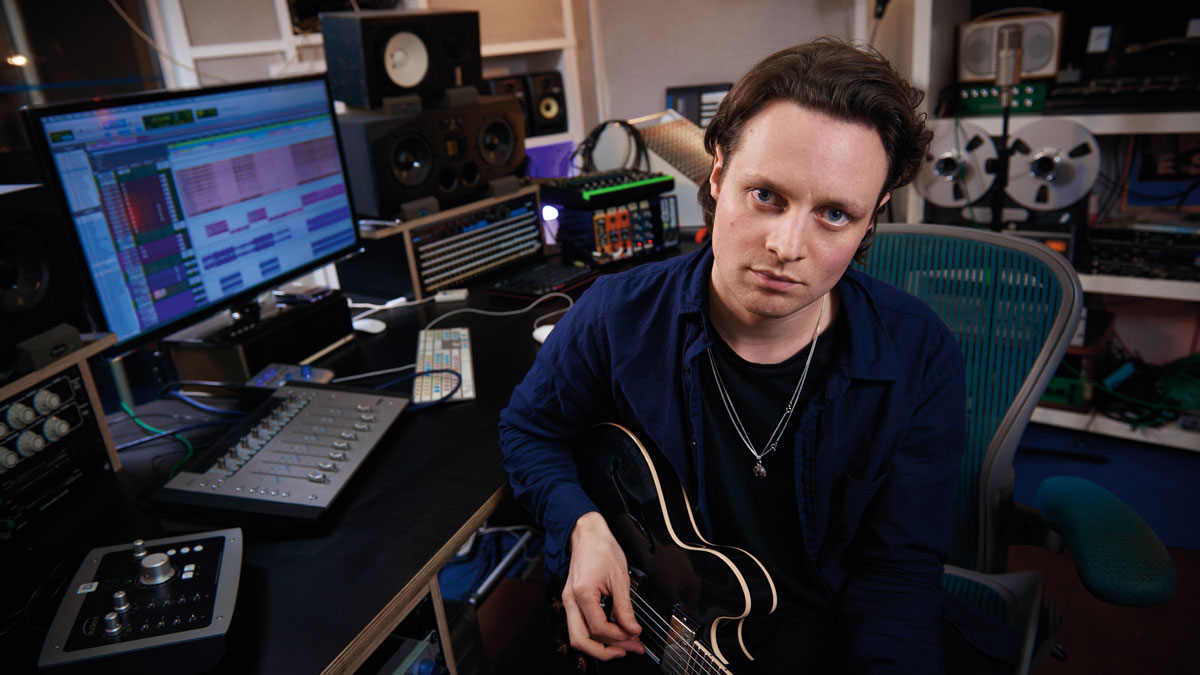
A place to call home
In what ways did recording in a familiar space affect the production process?
“We obviously had a lot of freedom to experiment, but I was quite conscious to still divide the process up. There were so many things in this process that could have become chaos. So we had writing time and then, when writing had finished, we had preproduction time, where we were just playing those songs and really getting them together. Then we finished [pre-production] and we were into recording.
With this one, we wanted to do it in what might be seen as a more old fashioned or traditional way
“We took that approach rather than doing everything at the same time, which could be an easy trap for anyone [who is self-producing] to fall into. It was about really setting out divisions and having a structure to it that meant that it didn’t start getting confusing for people and drag on.”
Were you always envisioning a more stripped back sound for this record?
“With this record, we wanted it to be a kind of organic feeling performance-based reality record where it felt like a band. With our previous record, Given To The Wild, sections were chopped and put over here and this and that. There were no boundaries on it and no limits. If we wanted to layer 20 guitars, we would layer 20 guitars.
“This record was a conscious effort to not do any of that and to record the songs after they were written and have them feel like performances. If someone wanted to layer a load of stuff with guitar, it was a bit sort of, ‘Hmm, let’s think about this. Do we need to do that? Why do we need to do that?’
“It was a different type of record that we were trying to make. With this one, we wanted to do it in what might be seen as a more old fashioned or traditional way.”
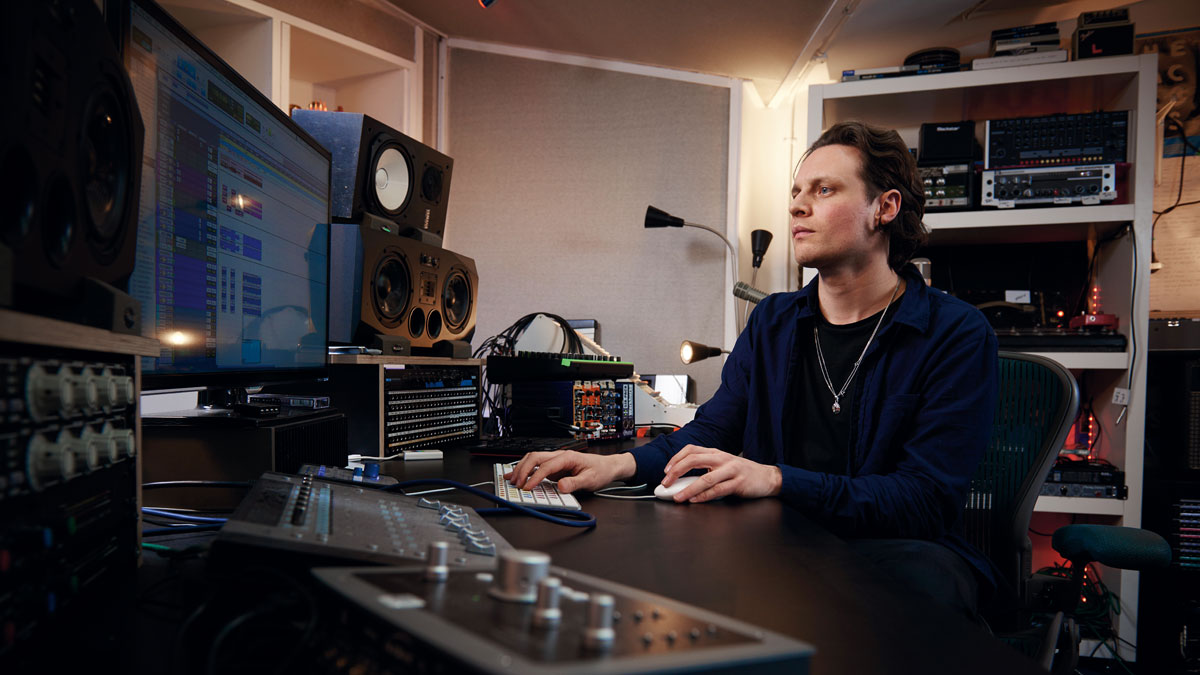
Click tricks
So how did you generally approach the recording of the guitars to help achieve this organic performance-based vision?
“Every song started from a live performance in the main room. So we’d have everything mic’d up and guitar amps were separated into the small piano room with some divisions. We made loads of these rockwool [soundproofing screens].
Every song started from a live performance in the main room
“We just got a friend to make them so we could actually have the guitar amps in the piano room with enough division so that you didn’t actually get spill from the amps [this is when a mic on one instrument, eg an amp cab, is picking up the sound from another instrument, too].
“We also liked them in there because you could get a really tight guitar sound. We’d then perform the track completely live, although we’d already have mapped click tracks. In pre-production, we’d played the songs over and over until we got to the point where we put mics in the room. Then, when we got a take that we felt was right, we’d take that recording and map a click to it so that we had the dynamics of when the track felt good.
“That meant that when we went into recording, all the songs had a click trick mapped from our favourite initial pre-production takes. The live takes we then recorded with those clicks became our guide and the first versions of the songs. Then, when we started working on each guitar part, we still had all the rough guitars and the other instruments to gauge where everything was.
“We already had the full picture even if we were going to change certain guitar sounds. It was all quite simple. Everything has ended up being overdubbed but not really layered much.”
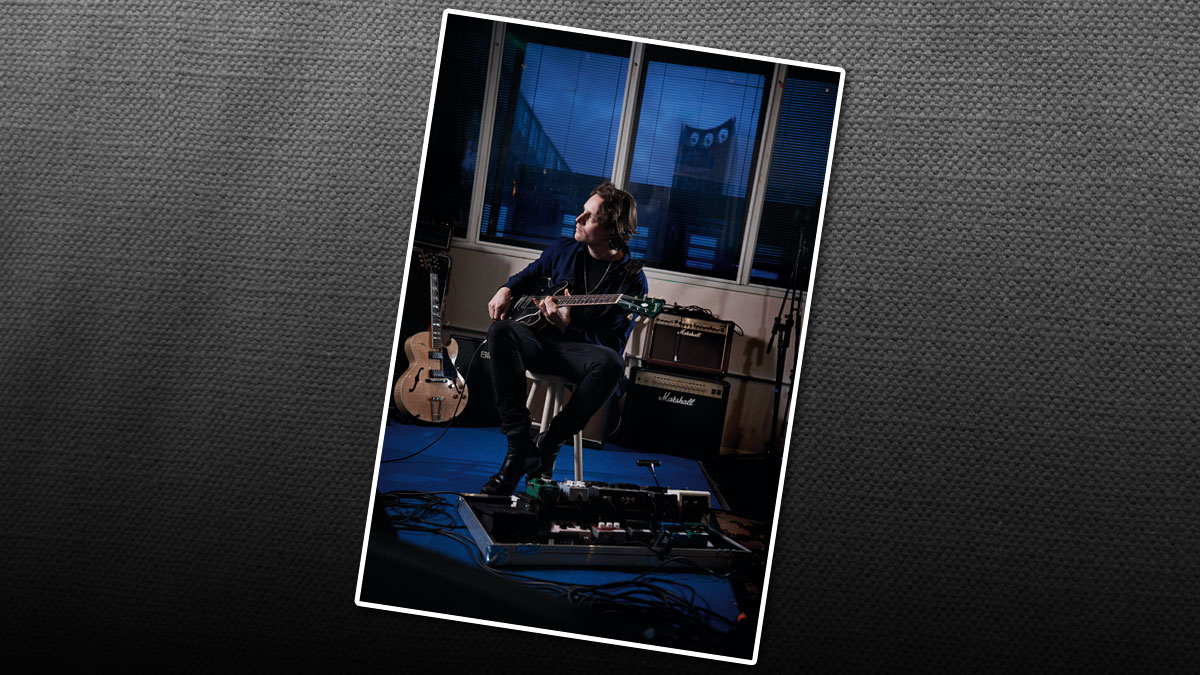
Tech techniques
Did you utilise any re-amping techniques?
“One of the really cool things about this set-up [in the control room] is that we can run anything out of these Radial X-Amp 500 series racks. So actually you can just send out a guitar sound and print back anything from any pedal. The amount of pedals we’ve got is huge, which we kind of didn’t realise until we put them all out on the shelf!
All the acoustics we recorded were printed through the Revox B77 tape machine
“With [the Radial], you can send signals into any pedal and send the pedal back so a lot of the effects we printed were never really recorded originally. We tried to get the sound close but there were moments where, if we wanted to accentuate something, then we’d just pick a pedal and try different things.”
And did you use any plug-ins?
“We tried not to at first but then we gradually accepted defeat. With the last record, we used a lot of plug-ins and really got into that world, whereas this one we wanted to try not to… but we did end up using some.
“We’ve got the Waves stuff, which is really great. Some of their reverbs are really good for guitars, so there are some reverb sends that were set up on top of the guitars and were kept.”
When it came to guitar sounds, how far did you go in search of interesting tones?
“All the acoustics we recorded were printed through the Revox B77 tape machine in the same fashion as we did with the pedals on the electric guitars. After they were recorded, we’d just send out the track and print it onto the tape. That became a real character on the album, even for some of the electric guitars, which we’d also print after the recording.
“If they felt like they needed a little bit more grit and it felt like it fitted the track, the tape always did it. It just distorts in a way that pedals don’t seem to. If you wanted to really distort something, then you’d just put it full whack into the tape and it would compress it and distort but in a really nice way. But it is that sort of analogue world, isn’t it? Sometimes you’re reaching for that with emulations but actually even just the simplest form of tape does the job.
“The other thing we used for the guitars is this spring reverb thing, which is an old Farfisa organ power supply. The power supplies had a spring reverb built in for the organ. If we felt we were missing something, we’d print the guitar through that. A really good chain was into the spring reverb then into the tape and then back into the track.”
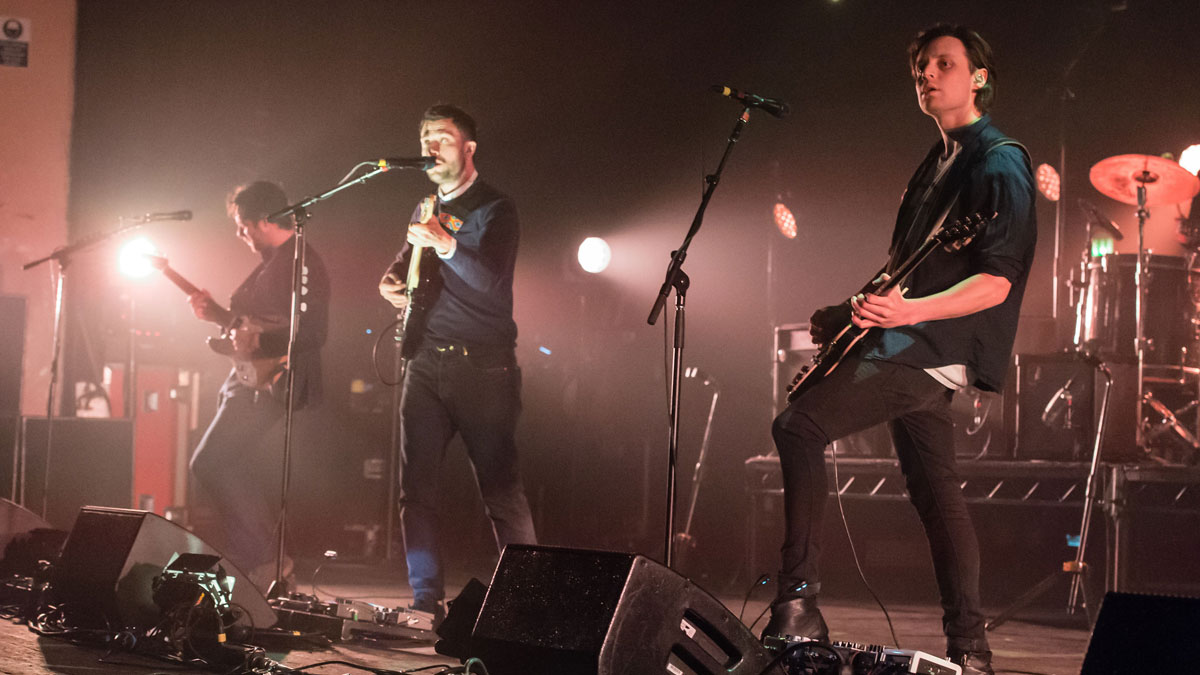
Make it count
What amps did the three of you gravitate to?
“Felix [White] mainly uses [Marshall] Bluesbreakers and he’s got a few of them and he also uses [Vox] AC30’s so, usually between those two, we had his sound. Actually, we also had a [Fender] Blues De Ville.
“We used to play with Blues De Villes a lot so that was sort of a good clean amp to use. We did switch around those a bit for Felix whereas, for my amp, I pretty much stayed with the Selmer. It’s like an old… I don’t know what it’s called… it’s like an old 70s treble and bass thing, with a big bass speaker. It’s just this one speaker.
It’s the performance; the parts themselves and what you’re actually recording that are more important than the gear
“That, for me, has just been irreplaceable and I use it on almost everything. For maybe half the songs, Orlando [Weeks, lead vocals and guitar] is playing the rhythm down the centre of the song, where he just plays the chords and he plays them one way. He’s got a kind of distinctive [technique] of strumming very fast on one chord.
“We’ve gone out and got real nice amps and tried a load of stuff. But, he uses a Roland Cube live, which is like a busker’s amp. After pushing him to use other amps and going out and getting other amps, he was never happy and the Roland Cube won!
“Now, live, he won’t use anything but that Roland Cube. Like with me and the Selmer, if someone likes something and it feels good, then you need to embrace that because, actually, that’s more important.”
Now you can reflect on making this record as a producer, what would your main advice to anyone who’s thinking of producing their own album in their own space?
“It’s not a light decision as it wasn’t a light decision for me. I think, when you get into the production world of stuff, it’s very easy to get carried away, thinking that you need certain things to do stuff and actually a lot of that isn’t true.
“I know that sounds hypocritical having so much stuff here but, actually, there’s so many things you can do now without having a massive studio and loads of gear. We could have done the guitars for this record sitting in a box room. I think it’s important to remember that the performance; the parts themselves and what you’re actually recording are more important than the gear.
“It’s all good having this really expensive compressor and EQ and the right preamp that’s a £1,000 but if you’re setting all that up and not feeling good about things, then you won’t have a good performance and you won’t end up with a good recording.”
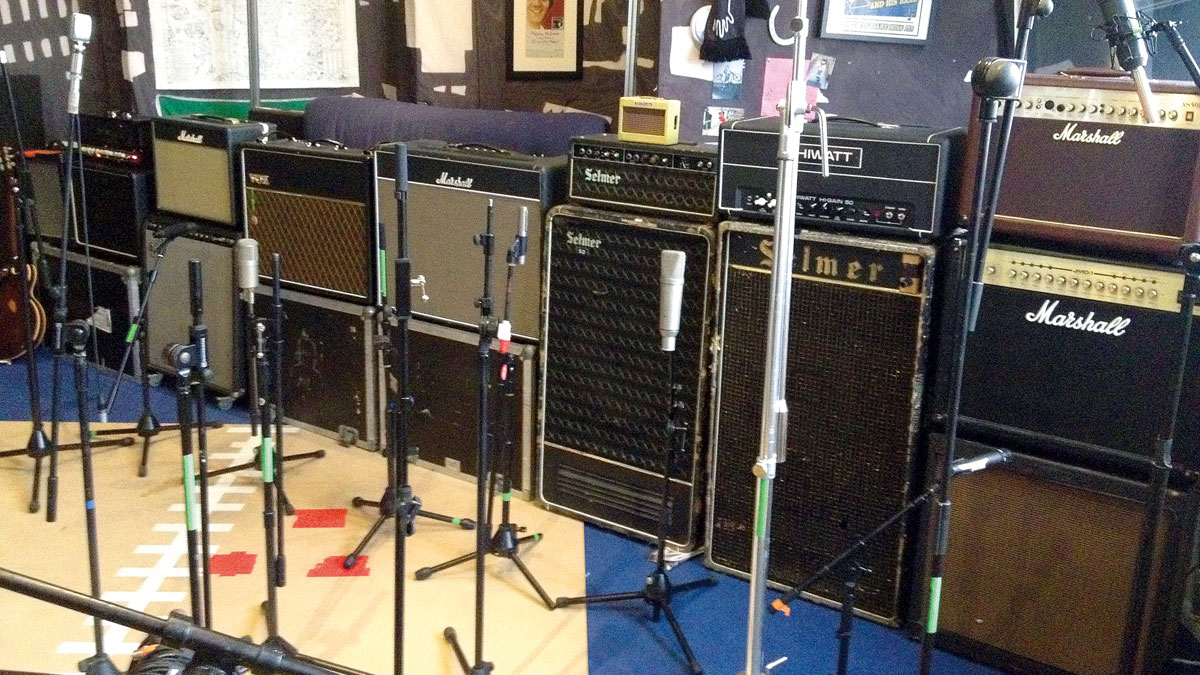
The wall of sound
How Hugo’s experiment with multiple amps proved a dead end
“At the start of the guitar sessions, we said, ‘Right, this is guitar time now!’ but we got a bit too excited about guitar time! We got all the amps out so the studio was covered in amps lined across the whole room, every one plugged in.
Sometimes, it just doesn’t make sense to lay everything out in the perfect way and try everything
“There were probably 20 amps across the room and we had our four mic choices set up so we could just plug in to this, try that one, move to the other and try the other one. We did that for about a day and then it just became chaos!
“Sometimes, it just doesn’t make sense to lay everything out in the perfect way and try everything. It’s was quite obvious what amps were working for who live anyway so we just went with that really. That’s good advice. Stick with what you know.”
The Maccabees’ fourth album, Marks To Prove It, is out now on Fiction Records.
Don't Miss
The Maccabees' Hugo White: the 10 records that changed my life

